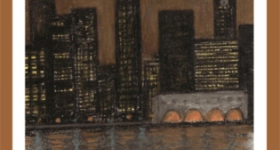(Farrar, Straus & Giroux)
New York City, 1968. In this watershed year of American politics, Georgette George escapes her rural upstate New York hometown for the big city. Raised in a poor and troubled household as the oldest of six children, George arrives at Barnard College on scholarship, where she is paired up with Dooley Ann Drayton, a wealthy Connecticut-born WASP who had requested a roommate “as different as possible from [her] own.” Self-righteous, do-gooder “Ann” longs to be black—“Oh, I wish I could wear an Afro!” she says, examining her own limp hair—and attempts to escape her own privileged background by leaping into student radicalism. George secretly yearns for an alternate life as well: the assuredly square traditional trappings of marriage and family.
Sigrid Nunez’s portrait of a friendship is also in part a portrait of a generation, a relentlessly detailed depiction spanning a tumultuous four decades. Nunez’s precise and often wickedly observant prose, written in the form of George’s memoir, takes George from her college days and career as a magazine editor in the 1970s to raising her children in the 1990s, framed between real-life events such as the post-Vietnam progressive backlash, Woodstock, the Patty Hearst trial, and race and gender politics. But The Last of Her Kind is more than mere retrospective or nostalgic Sixties lit. At the heart of the novel is the intense friendship between George and Ann and their seemingly unbridgeable class differences. Although George has not seen her former roommate for nearly 20 years, she still can’t shake her.
Ann, even in the form of the symbolic, endures as a metaphor for a certain kind of life: “For hadn’t Ann done it—held on to her purity and her dream and illusions all those years?... The change of name, the dedication to the creation of a new self, the fierce determination to escape what they were born, the passionate belief in unselfish devotion. The heart.” In Nunez’s story, the last, or the lost, serves as elegy as well as enigma. —Lisa Ko









Comments